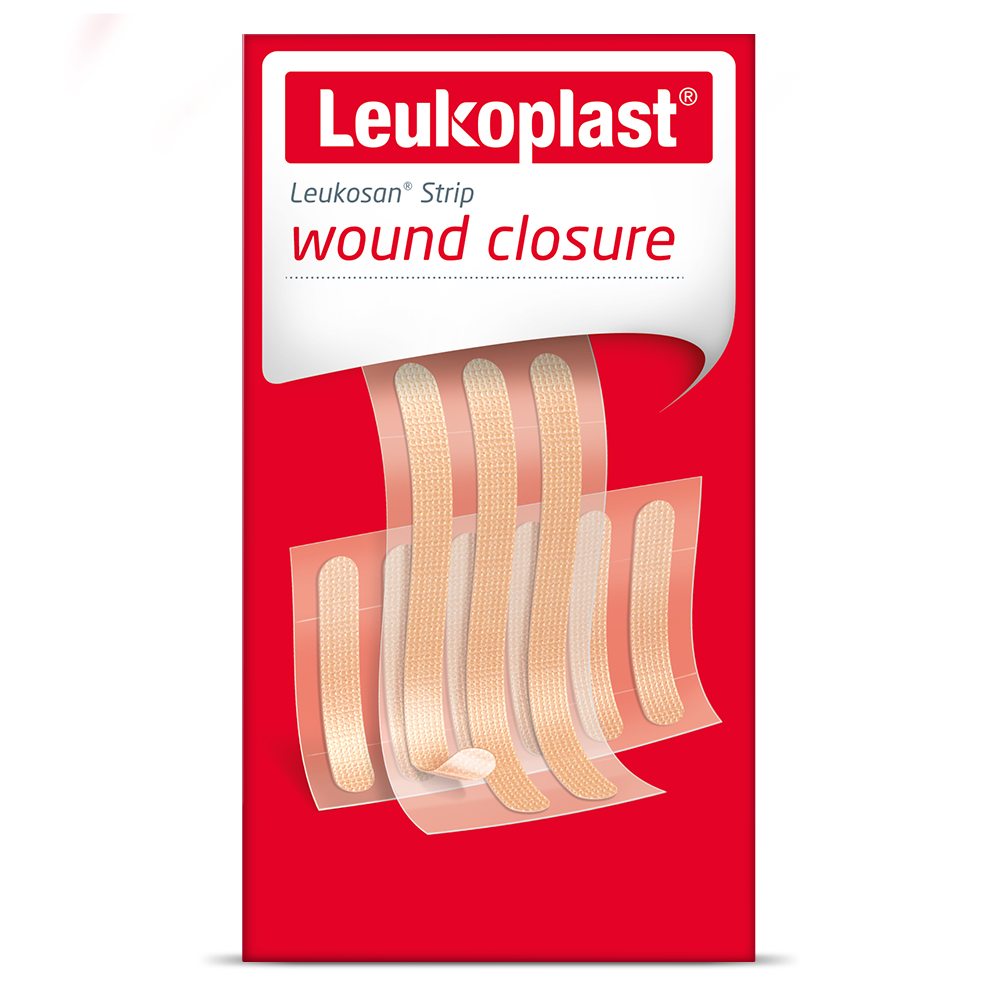Caring for lacerations
Lacerations are made by tearing or caused by strong, short-lasting blunt force. Follow the treatment steps below, which are based on recommendations by the Department of Health of Western Australia:
“See your doctor or nurse if the wound:
Or if:
If (e. g. in case of a scalp laceration) there is a skin flap and it is still attached, carefully return the skin flap as far as possible to its original position over the wound with a moist cotton swab or pad.
Caution: If you are unsure how to manage the wound please seek medical advice.
Many common wounds can be dealt with at home. But when should a doctor be consulted? Scroll down for more information!

Topical, adhesive strips for the atraumatic closure of small wounds.

Skin-friendly sterile dressing with wound pad for small to medium-sized wounds.